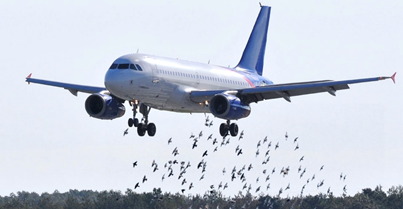
Wildlife strikes pose a significant safety risk to aircraft. Consequently, airports must take measures to monitor, and if necessary, mitigate wildlife strike risks on and within the vicinity of an airport.
Wildlife strike risk mitigation comprises several areas of research, development, and operations that support the National Airspace System. Aviation safety stakeholders include: wildlife biologists, airports, aircraft and jet engine manufacturers, airlines, the National Transportation Safety Board (NTSB), FAA Aviation Safety Information Analysis and Sharing (ASIAS), and the Commercial Aviation Safety Team (CAST).
The FAA works collaboratively with the U.S. Department of Agriculture (USDA), the Smithsonian Institution, and academia to increase aviation safety through research on habitat management and wildlife control techniques, wildlife strike data collection and analysis, avian surveillance research, and outreach. Strike reports are collected and stored in FAA’s Wildlife Strike Database.
Education of key participants within the community contributes to comprehensive reporting of wildlife strike activity and fuels the development of advanced methodologies and new technology that continue to reduce the risk of damaging wildlife strikes.
The FAA will continue to research, evaluate, and communicate the effectiveness of various habitat management and wildlife control tools and methods that reduce wildlife strikes with aircraft at and within the vicinity of airports. These operational and research activities provide a scientific basis for FAA policies, regulations, and recommendations for improved airport safety at and around our nation’s airports.